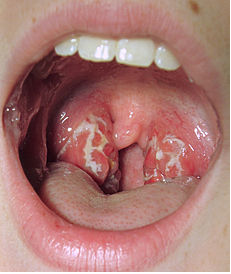Who hasn’t had a sore throat before? Most throat problems are minor and go away on their own, but sometimes they can be due to more serious throat disorders such as tonsillitis.
What causes a sore throat?
Sore throats are usually, but not always, caused by an infection. Most of the times, sore throats are caused by respiratory or influenza viruses. These are self-limiting infections which do not warrant antibiotics.
Around 10% of people have “Strep throat”, or pharyngitis caused by Group A Streptococcus bacteria. The danger lies in potential complications which some individuals are naturally predisposed to, such as acute rheumatic fever or acute glomerulonephritis, which typically occur 2-4 weeks after the throat infection. Thankfully rheumatic fever is now a thing of the past with widespread use of antibiotics. Post infective acute glomerulonephritis can lead to sequelae such as acute renal failure, and rarely, chronic renal failure. This usually presents as low urine output with blood in the urine, or frothy urine, nausea/vomiting, high blood pressure (which may cause seizures), water retention and swelling around the body.
It can be difficult to discern between the common influenza-like illness and “Strep throat”. A number of clinical criteria such as Modified Centor criteria (http://www.mdcalc.com/modified-centor-score-for-strep-pharyngitis/) have been studied to help in clinical decision making and judicial use of antibiotics.
What can I do to feel better from sore throat?
You may try gargling salt water and sucking on lozenges.
Over the counter pain medication can help provide relief of pain from the sore throat.
When should I seek help if I have a sore throat?
Most patients are able to recover on their own with symptomatic treatment. Severe throat pain or failure to improve within 5-7 days may warrant medical attention.
Seek immediate help if you have any of the following symptoms:
- Difficulty breathing
- Difficulty swallowing saliva with drooling
- Neck or tongue swelling
- Skin rash or stiff neck, drowsiness
What are the tonsils and adenoids?
The tonsils are fleshy pieces of lymphoid tissue located in the back of the throat behind the tongue. The adenoids are similar pieces of tissue located in the nasopharynx which is at the back of the nasal cavity. Both the tonsils and adenoids are organised collections of immune cells which allow the immune system to recognise foreign pathogens and be stimulated to fight infections. As we get older, the tonsils and adenoids become redundant and do not maintain any immune function. However, if bacteria or viruses contaminate the tonsils or adenoids, persistent or repeated inflammation and swelling of the tonsils and adenoids can occur. This is particularly common in children, where large tonsils and adenoids can result in disruption of school, affect sleep, cause obstructive sleep apnea and even stunt the growth of the child.
Enlarged tonsils with exudates (white to yellow material on the surface of the tonsils) together with symptoms of fever, severe sore throat, drooling and neck pain suggest acute tonsillitis. It may be caused by a bacterial or viral infection.
Tonsillitis often recovers in a few days and initial treatment is symptomatic. This includes gargling salt water, drinking warm fluids, sucking on lozenges, and taking over-the-counter painkillers. Antibiotics may also be prescribed if there is suspicion of a bacterial aetiology.
Tonsillectomy and/or adenoidectomy, or surgery to remove the tonsils and adenoids may occasionally be recommended. Absolute indications for surgery are obstruction of airways (difficulty breathing, snoring, choking, persistent mouth breathing), interference with swallowing, and uncontrollable bleeding. Relative indications include recurrent acute throat infections and chronic tonsillitis. This is a simple operation that is often done as a day surgery procedure under general anaesthesia. New technologies such as the Coblator and Microdebrider allow tonsils and adenoids to be removed with minimum of pain and complications.
In rare cases of asymmetrical tonsillar enlargement in the absence of acute infection, the worry is always an underlying lymphoma and the definite diagnosis would require a tonsillectomy.

Photo showing acute tonsillitis with pus in the crypts of the tonsils
Please contact us if you have further enquiry on Throat Disorders or Request an appointment to see our ENT specialist
